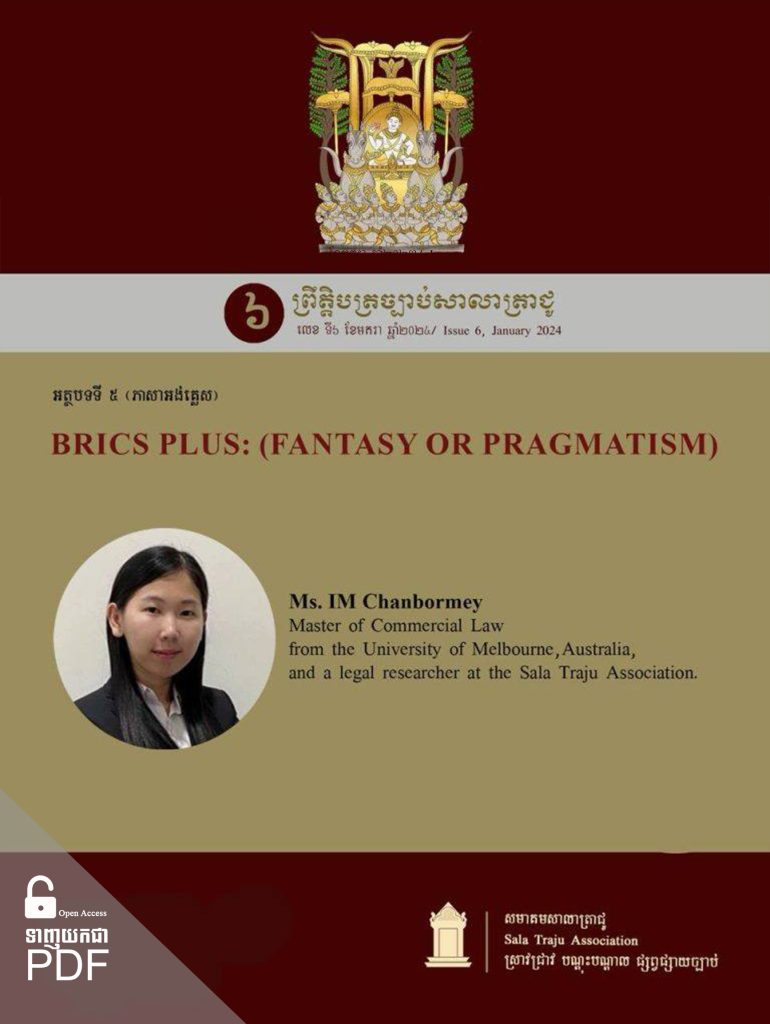
ABSTRACT
The BRICS (Brazil, Russia, India, China, and South Africa) officially commencing the operation of the New Development Bank (“NDB”) in 2015 is determined to make transactions in its members’ national currencies at first and then institute a common currency to eschew the perennial use of the US Dollar in an enormous portion of international trade due to a standpoint that this can cause the current global order to be shaped by the United States and Western nations. Whether these ambitions can be converted into tangible accomplishments if the BRICS does not appeal to other countries for membership (“BRICS Plus”) is a controversy. Therefore, this brief article is contemplated to resolve (1) whether China attempts to dethrone the US Dollar to make its Yuan a global reserve currency by means of the BRICS initiative, (2) whether the proliferation of desire for this trade bloc’s membership succeeds in its survival as a rival to the Group of Seven (“G7”), and (3) whether Cambodia attainably benefits from the former in case of its engagement in store. This article concludes that the intra-BRICS existing cooperation has been witnessed, yet more potential sectors have to be explored. This can be epitomized by making commitments under the Paris Agreement on Climate Change and the UN’s Sustainable Development Goals (“SDGs”) in the future. BRICS nations can consider creating a BRICS energy alliance, founding additional BRICS institutions, and creating an annual forum to tackle hurdles they have encountered. China’s ambition of upgrading the Chinese Yuan as the global reserve currency tends to be a lengthy process in light of the excessively dominant US Dollar despite that in China’s cross-border trade, the use of the Chinese Yuan increased by 49% surpassing the US Dollar for the first time in 2023. Furthermore, to date, over 40 countries have shown their willingness to join the BRICS, whilst 23 already submitted their application officially, yet specific accession requirements have not been provided thus far. In the context of Cambodia, despite the BRICS’s ambiguous accession requirements and inauspicious prospects of such realizations, it should conduct a thorough feasibility study on the possibility of participating in this trade bloc, which is highly envisaged to copiously benefit its socioeconomic welfare as contributed by the Association of Southeast Asian Nations (“ASEAN”) and the Regional Comprehensive Economic Partnership (“RCEP”).
